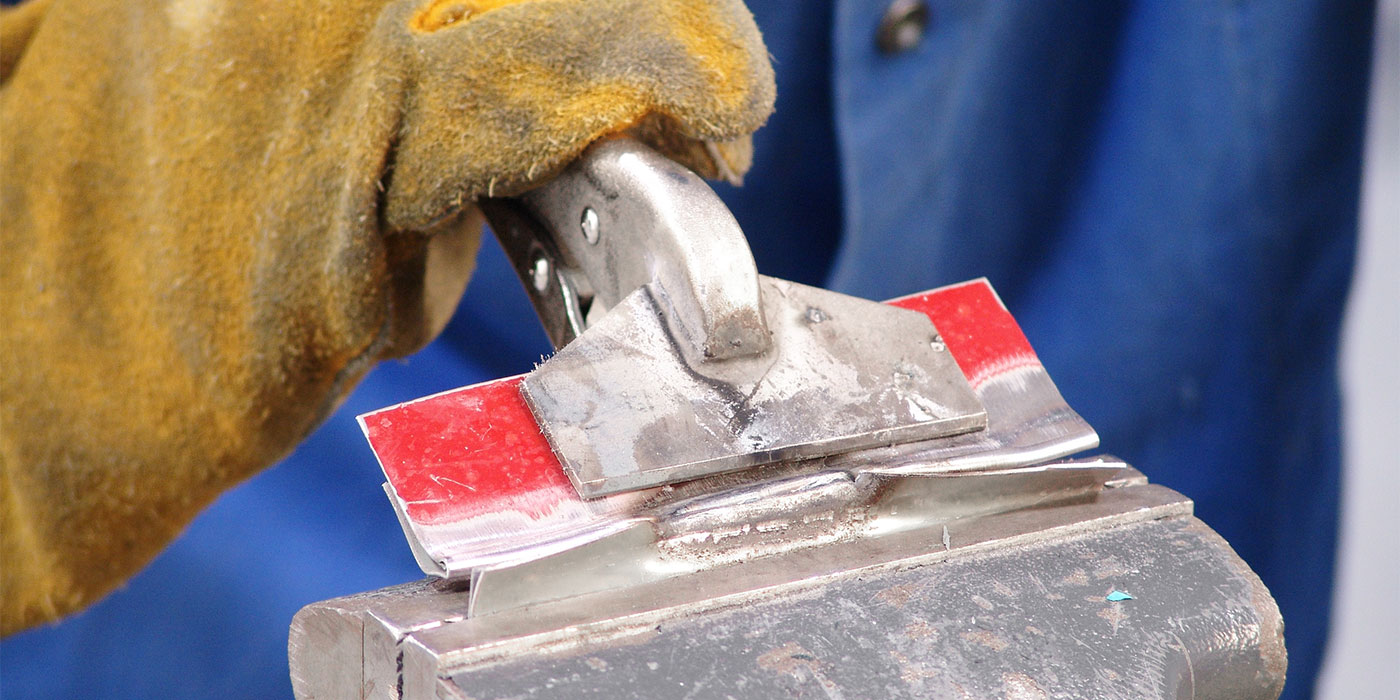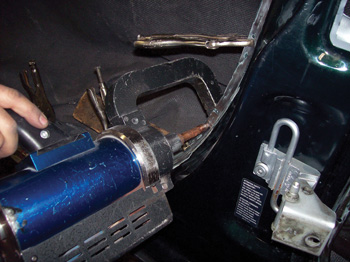 Business decisions have to be made every day in the collision repair industry, including decisions on how to repair today’s vehicles or what to repair in them. That particular repair decision can be tough, considering that the repair instructions can sometimes be hard to find.
Business decisions have to be made every day in the collision repair industry, including decisions on how to repair today’s vehicles or what to repair in them. That particular repair decision can be tough, considering that the repair instructions can sometimes be hard to find.
Hopefully, nobody is intentionally repairing vehicles incorrectly. I think what happens more often is that sometimes, when decisions are made, we don’t see the big picture or are not correctly informed when it comes to vehicle repairs.
OEM Recommendations
Some of these poor decisions based on incorrect information occur when working with adhesives in repairs.
Many vehicle manufacturers are using adhesives in the factory and have recommended procedures for repairs. Many have started to use adhesives to adhere the roofs of many vehicles. Some weld the roof at the factory, but the repair calls for adhesives to be used with either adhesives only, rivet bonding, weld bonding or spot welds in the corners with adhesives. Which procedure does a shop follow? Does a shop replace the adhesive or not? Should it use adhesive instead of welding? Is weld bonding best? These questions must be answered in order for the shop to make the correct decision.
First, how does the OEM want the vehicle repaired? This consideration is always No. 1. Second, does the shop have the proper equipment and training? Keeping up with a rapidly changing industry can be expensive. Third, why should a shop keep up with these procedures? It takes time and training. Is it worth it? I commonly hear, “I’ve been doing it this way for years and haven’t had any problems, so why should I change?”
These are not easy questions to answer without some good background information. I believe that if a person is going to make a decision, they need the “why” something is needed or used. Armed with this information, a person can make a sound decision that will be in everyone’s best interests.
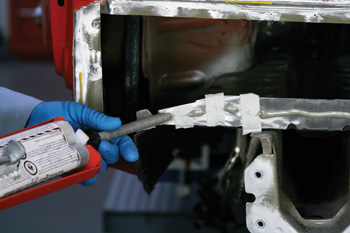 Daunting Challenges
Daunting Challenges
Automakers have been facing some daunting challenges. How do you make a safe, lightweight, strong, comfortable, electronically advanced, powerful, fuel efficient green vehicle that looks good, costs little to manufacture and will maintain its resale value? Sounds simple enough, but I don’t build them. They’re trying to think of new ways to meet these demands, and one of those ways is through adhesives.
Adhesives used for vehicle construction are multi-purpose products that perform a variety of functions. Here are some of those functions:
Vehicle Stiffness or Rigidity. Steels today are lighter and stronger than in years past. This strength also leads to steels being more brittle, which can be a problem in areas where there is high stress. This high stress can cause metal fatigue. Adhesives minimize movement by using more surface area for the bonding of metal. A spot weld or plug weld may only be 8 millimeters in diameter, but adhesives are bonding much larger surface areas. They spread the force over a larger area and reduce stress on one point. They also add strength to areas required for crash safety in this same way. Good examples would be the occupant compartment on Chrysler or Ford through weld bonding, and the use of adhesives for structural glass for many years now.
Corrosion Protection. Vehicles today are built to go the distance. With some achieving 200,000 miles relatively easily, adhesives are a major contributor to their longevity and resale value. Welds have been notorious for corrosion issues. Adhesives help seal and possibly limit the number of welds required. Consumers are also keeping their vehicles much longer than previous years, so making sure the repair holds up over the time the owner will have the vehicle is an important consideration.
Sound Deadening. Consumers want a sound vehicle while driving or just closing a door. Adhesives keep a lot of the popping and noise levels down. Many people judge the airtight quality of a vehicle by the way a door sounds when closing. A thump is good versus a metal-sounding “ting!”
Hybrid Construction. Not to be confused with hybrid-electric vehicles, hybrid construction refers to the bringing together of many different strengths of steels, plastics, glass or other building materials. For example, adhesives allow for aluminum panels to be used on steel structures. This allows for many different materials to be used together to meet all requirements.
Cold Fusion. Many metals used today require STRSW welders or are recommended to not be welded during repairs. These are mostly ultra high strength steels that come under names such as boron alloyed steel. This can also hold true with aluminum outer panels bonding to steel. Using adhesives in place and in conjunction with items such as rivets will bond these metals, thus maintaining their strength and not creating corrosion hot spots normally associated with welding.
Basic Guidelines
So what can a shop do? Here are some guidelines:
1. Only use adhesives if the manufacturer has a written procedure that says to use them during repairs. If a vehicle was welded from the factory and there is no adhesive procedure provided, then welding would be the primary decision. If a business decision is made to move forward, document and follow adhesive manufacturers’ procedures diligently. Many manufacturers have guidelines or procedures if a shop decides not to use adhesives, one of which might be to increase the number of welds.
2. Training is a must. Training classes from adhesive vendors and I-CAR help technicians use products correctly. Follow through and check that products are being used correctly. Rivet bonding is being used in the manufacturing of more and more vehicles and is being included in the recommended repair procedures. Training in the use of the correct fasteners and adhesives is critical to the safety of vehicle occupants and the quality of the repair. This can be seen in the procedures required by Jaguar, BMW and Audi.
3. Equipment requirements. Specialized Squeeze Type Resistance Spot Welders (STRSW) may be required to weld bond steels. These welders can be expensive. Depending on requirements and frequency of use, doing research can save a shop time and money. Self-piercing rivet tools may be an option for aluminum intensive vehicles.
Type of Repair
The type of repair will largely determine what type of adhesive is recommended. Types of substrates being bonded for many hybrid construction vehicles will be a critical consideration as one adhesive may not do it all. Cure time and clamp time will also be a variable, as will bond line thickness. All of these considerations are discussed in many different training programs. Learning to identify when and where adhesives are to be used and how to use them correctly is critical.
Most Common
The three most common adhesives are acrylic-based, epoxy-based and urethane-based. Acrylic- and epoxy-based products are two-part products, with the acrylic-based having the fastest cure rate. Urethane-based products are generally one-part products that, in the past, had two-part options but were dropped due to the expense and equipment cost.
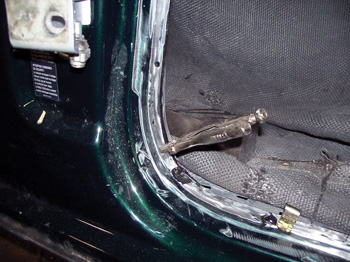 Roof Replacement
Roof Replacement
Let’s look at a roof replacement on a new vehicle. Many roofs are being applied at the factory using laser brazing, spot welds, weld bonding, rivet bonding and adhesive-only bonding using urethane-based adhesives. Some automakers actually recommend the exact same product used in the windshield adhesive bonding. When using urethane adhesive, primers are generally required for adhesion. This is different than the epoxy-based products that will bond to bare metal. Urethane-based products are flexible as they’re capable of bonding to many substrates including steels, aluminum, glass, composites and plastics. This flexibility with a longer wet or working time make them an ideal product for roof skins. A manufacturer may adhere an aluminum roof to a steel structure and eliminate concern over galvanic corrosion of two dissimilar metals.
The adhesive chosen for this type of roof replacement must have the properties needed to bond the materials. An adhesive used for glass and steel is different than an adhesive used for aluminum and steel. With aluminum, a non-conductive adhesive may be required. Along with adhesive choice, the surfaces must be properly prepared. An epoxy primer is generally required before the application of the adhesive manufacturer’s primer, which will give the proper adhesion and corrosion protection. Some procedures also require mechanical fasteners such as rivets or even a tack weld, which are used to prevent peeling of the panels. This knowledge can make the difference between a happy customer or a mad one with a warranty claim.
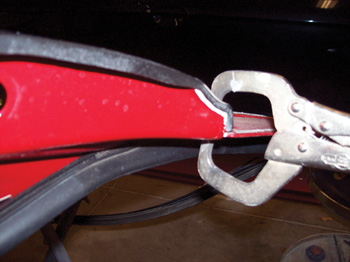 Avoid Bad Situations
Avoid Bad Situations
Lack of training and knowledge can put the best technician in a bad situation. When your shop’s reputation is on the line, can you afford not to learn?
One last bit of advice: If your shop is not replacing adhesives when used by the vehicle manufacturers, I hope you’re following the corrosion protection procedures. Once the corrosion starts, it spreads quickly.
4 Common Failures
1. Preparation. Many adhesives require bare metal for bonding; others require that primer be applied first. Knowing and following directions is key.
2. Plungers. Not leveling plungers on epoxy-based products before attaching the static mixing nozzles. This will cause an uneven mix to come through the tip, affecting all adhesive properties.
3. Incorrect nozzles. The use of incorrect nozzles is also a source for failures. Not all static-mixing
nozzles work the same.
4. Improper cleaning. The improper cleaning of surfaces will also have a direct effect on the adhesion properties of any product used.
I-CAR to Introduce Enhanced Adhesive Bonding Course with Live Demos in April 2013
Although the processes used for adhesive bonding haven’t changed significantly in recent years, repair facilities need up-to-date training to properly make the adhesive bonding repairs recommended for many of today’s vehicles.
The I-CAR Adhesive Bonding course (ADH01) provides current and relevant information necessary to help ensure collision repair professionals are trained on how to achieve quality repairs. The Adhesive Bonding course provides detailed information about the processes used in collision repair situations and will be introduced in April 2013 with enhancements and newly introduced live demonstrations.
Incorporating live demonstrations provides students the opportunity to experience firsthand how to properly prepare parts and use adhesive materials. The “Live Demo” portions of the course will simulate adhesive bonding procedures using two-part adhesives and will present the steps for an adhesive that is applied to bare metal, as well as the steps for an adhesive that requires a primed mating surface.
During the course, students will learn about the main types of adhesives used for collision repairs (epoxy-, acrylic- and urethane-based), differences between materials, characteristics and what is required when working with them.
The course explains that each type of adhesive has specific work and handling time, bond line and clamping considerations, and cure time recommendations. Other course details include considerations around knowing when to follow the instructions provided by the vehicle maker, and when to follow recommendations from the adhesive maker. The typical recommendation is to follow the instructions provided by the vehicle maker if the product being used is labeled by the vehicle maker. If the vehicle maker recommends the use of a product brand, follow those product instructions.
Using adhesives for repairs includes adhesive bonding, weld bonding and rivet bonding. The course provides an understanding of how the types of weld bonding and rivets used for rivet bonding are important for making the proper repairs. There are also specific considerations for using adhesives in aluminum repairs.
Considerations for part removal and cleaning for one- and two-part adhesive bonding repairs, as well as preparation for part attachment and factors that can impact successful attachment, are provided in the course.
For more details on Adhesive Bonding (ADH01), visit www.i-car.com.
Mitch Becker is a technical instructor for ABRA Auto Body & Glass. He can be reached at (763) 585-6411 or [email protected].













